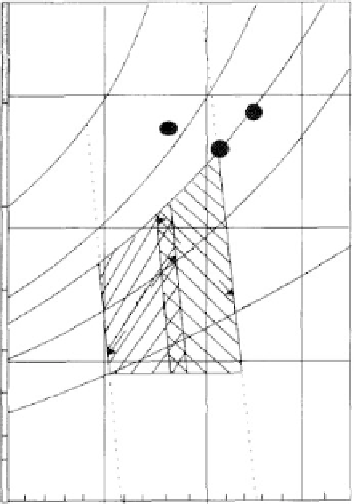Environmental Engineering Reference
In-Depth Information
15
20
B
A
C
15
10
10
5
5
0
-5
26ET*
-10
20ET*
0
25
OPERATIVE TEMPERATURE ˚C
20
30
Figure 16.1.1
Singapore buildings indoor temperature and humidity (Sekhar, 1995).
is very high. Hence, recirculation methods are commonly applied to AC systems.
Refrigerant-based chillers are commonly used in buildings, as evidenced by the many
cooling towers that are installed on rooftops. The chillers are used to cool the water
used in the cooling of air in the air cooling unit (ACU). Chillers are common in build-
ings to cool water distributed in buildings in which cool air is produced through a
fan coil unit (FCU). In addition, centralized air-conditioning is commonly applied in
large building spaces through a network of air ducts. As open spaces such as com-
mercial establishments have a large volumetric supply of air, the treatment of outdoor
air sensible and latent load has an impact on air-conditioning system performance.
In addition, as in Singapore, buildings operate at lower temperature and higher rel-
ative humidity (approximately 23
◦
C and 70% - see Figure 16.1.1). This is due to
the non-reheating of cold air to reduce the energy consumption of the air handling
unit (AHU).
Residential buildings, both public and privately owned, use window and split
types of air-conditioning system. However, split-type air conditioning systems are
the most common due to the flexibility, unlike window types, of locating the
compressor/condenser unit and the evaporator/expander unit. Residential buildings
use air-conditioning systems during both day and night. However, natural ventilation
and air fans can be used simultaneously during daytime, when air-conditioning sys-
tems are not commonly used. As shown in Figure 16.1.2, in the case of Singapore,

Search WWH ::

Custom Search